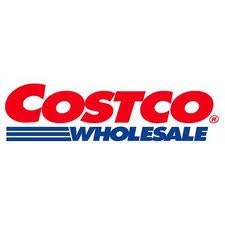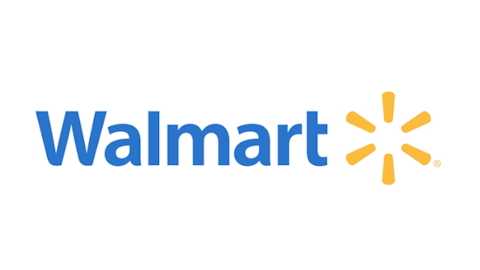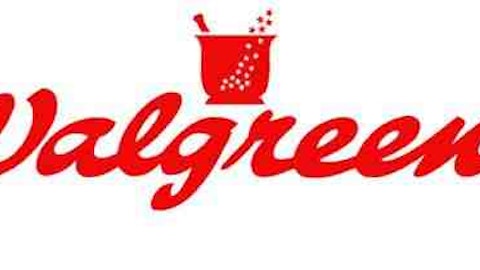It’s obvious that investors will raise eyebrows and question whether it is prudent to invest in Costco Wholesale Corporation (NASDAQ:COST) when it’s trading at 24 times its earnings. On the other hand, competitors Wal-Mart Stores, Inc. (NYSE:WMT) and Target Corporation (NYSE:TGT) are trading at price-to-earnings ratio of 15 and 16 times respectively. There can be two possible answers: either the stock is too costly an investment, or the company’s performance and business strategy justifies the valuation.
Is the valuation justified?
Costco Wholesale Corporation (NASDAQ:COST)’s performance has been constantly outstanding. Over the last five year,s its revenue has grown 7.9% and earnings surged 18.9% on a year-over-year basis. Going forward, analysts predict 13.5% growth per year during the next five years and revenue growth of 6.9% for the full year. The company is also only in the infant stage of its international expansion and has consistently reported a growth in comparable same-warehouse sales. Thus, the estimates seem achievable and justify the premium.
How Costco Wholesale Corporation (NASDAQ:COST) does it?
The most interesting thing about Costco Wholesale Corporation (NASDAQ:COST) is its model, which is to charge membership fees upfront and then sell goods at deep discount. Store sales make up 98% of the company’s revenue, and the rest from membership fees. The interesting part is that the fees form 75% of its operating income. Further, charging membership fees up front books the company’s profit a year in advance and also provides stability to its cash flows.
Paying membership fees also works on members’ mindsets. They have already borne an expense out of which they have to derive value, causing them to shop at Costco Wholesale Corporation (NASDAQ:COST)-operated warehouses. Customers are driven there not only because they pay a fee upfront but also because they get industry-leading prices. Free samples, logical store layouts, select merchandise offerings, and superior customer treatment also help encourage more frequent foot-fall by customers. Overall customer satisfaction can be gauged by the fact that membership fee income increased by 12% to $531 million, with 86.4% membership renewal at the end of the third quarter of 2013.
Apart from customer satisfaction, Costco Wholesale Corporation (NASDAQ:COST)’s management treats its employees well too. Better paid and satisfied employees reduces workforce turnover, saving the company recruitment costs and offering its customers better service. Currently the starting wage of an employee is about $12 per hour, with an average employee earning $21 an hour. Paying employees well adds to the company’s reputation and saves a lot of costs in the long run. For example, Wal-Mart Stores, Inc. (NYSE:WMT)’s employee strikes emphasized its poor working conditions and blemished the company’s reputation.
The future growth factors
Costco currently has 627 warehouses concentrated mainly in the U.S., Canada, and Mexico, with a few warehouses in Europe, Asia, and Australia. Though in an early stage, its international expansion has played an important part in increasing its membership count as warehouse openings in Japan have been well received by customers. Costco’s international operation currently accounts for about half of its revenue, leading to an initiative of focusing majorly on international expansion. The Asian and Australian markets should provide the required momentum for growth.
Costco is also focusing on its e-commerce business as in the last quarter the company’s sale from its online platform surged 20% on a comparative basis. The e-commerce program is focused in the U.S., Canada, and the U.K. at the moment, but as Costco expands its operations into newer territories its online sales should surge.
Not the only discounter
Wal-Mart Stores, Inc. (NYSE:WMT)’s Sam’s Club also works on the same membership model alike Costco, but it fails to execute and manage its stores in the same way. This is evident from the fact that Costco’s same-store sales increased 4.5% while Sam’s Club reported a meager 0.2% increase in the last quarter.
On a comparative basis, Sam’s Club might look weaker than Costco but Wal-Mart Stores, Inc. (NYSE:WMT) is not a weak company. With a $460 billion revenue generation, Sam’s Club delivers more than four times Costco’s revenue. If we expect Wal-Mart Stores, Inc. (NYSE:WMT) to deliver exponential growth in the same way as it did a year back, though, it would a bit too unrealistic.
Wal-Mart Stores, Inc. (NYSE:WMT) is a very big brand name in the U.S., leaving not much scope to expand domestically. That is the reason the company is focusing more on international expansion. It is trying to expand its operations in Canada by opening 40 new Supercenters there. Wal-Mart is also trying to increase its operations in Brazil, China, and South Africa with its “Everyday Low Prices” concepts.
In the U.S., Wal-Mart is moving into small-format stores called “Express” stores. Express stores will be at least 10% smaller in size than Supercenters, providing a better return on capital as they are estimated to occupy 8% less space and cost 16% less. Wal-Mart is also focusing on e-commerce and has acquired Grabble for its mobile technology and Kosmix for digital advertising to fortify its position in the online retail business. Yiahodian, a Chinese online store, was also acquired by Wal-Mart, making it evident that it wants to strengthen its e-commerce operations by targeting markets with huge potential.
The weakling
Target Corporation (NYSE:TGT) had a bumpy start to 2013; its top line was more or less flat as its last reported quarterly revenue stood at $16.7 billion, compared to $16.87 billion last year. Its earnings took a major beating as it came at $0.77 a share, declining from $1.04 per share in the first quarter of 2012. The next few quarters are also expected to be flat, with the company’s guidance expecting to earn $4.12 to $4.32 per share.
Though the company has gained almost 20% in the last year, it does not seem confident in delivering. If this continues, investors’ confidence will shake. At present, the company’s grocery offering, loyalty-card program, and REDcard discounts on in-store and online purchases might hold its sales, but nothing offers further growth. Target Corporation (NYSE:TGT) has entered into Canada to expand its operations, but it still trades at a forward price-to-earnings ratio of 14.5 times its earnings, meaning that the industry does not think highly of its future.
Final words
Neither Costco nor Wal-Mart will deliver huge overnight gains for investors. Costco looks stable and should provide decent returns over the long term in the form of capital appreciation. Wal-Mart, on the other hand, should be seen as a retirement plan with steady dividend and share repurchases. Both the investments should provide stability to your money.
tarun bachhawat has no position in any stocks mentioned. The Motley Fool recommends Costco Wholesale (NASDAQ:COST). The Motley Fool owns shares of Costco Wholesale. tarun is a member of The Motley Fool Blog Network — entries represent the personal opinion of the blogger and are not formally edited.
The article What Justifies This Retailer’s Premium? originally appeared on Fool.com is written by tarun bachhawat.
Copyright © 1995 – 2013 The Motley Fool, LLC. All rights reserved. The Motley Fool has a disclosure policy.






